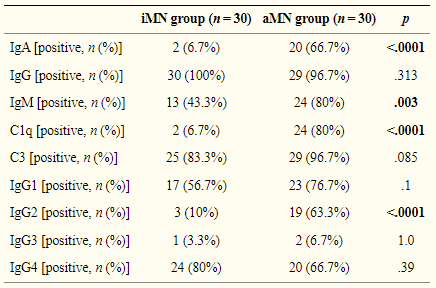Ther are two types of Membranous nephropathy (MN), idiopathic MN (iMN) and atypical MN (aMN). A group from Department of Nephrology, Peking University People’s Hospital, Beijing, China has reported that activation of the mannose-binding lectin (MBL) pathway plays a vital role in the development of iMN.
https://www.ncbi.nlm.nih.gov/pmc/articles/PMC8920381/
There are three major complement pathways include the classical pathway, mannose-binding lectin (MBL) pathway, and alternative pathway. C4d is generated in both the classical and mannose-binding lectin complement pathways. C1q is the major precursor of classical complement activation.
The presence of both C4d and C1q indicates the activation of the classical pathway, but
identification of C4d without C1q is more consistent with MBL pathyway, and
C4d and C1q are both absent in alternative complement activation.
The renal pathology of iMN is characterized by the deposition of predominant IgG4 with low amounts of IgG1 and IgG3. IgG4 does not activate the classical complement pathway. C4d is detectable in essentially 100% of patients with iMN which was absent in alternative complement activation. These observations suggest that the MBL-initiated complement pathway may be the predominant complement activation in iMN. On the other hand, aMN characterized by cells proliferation, multi-site immune complex deposition, ‘full house’ in immunofluorescence, including IgA, IgG, IgM, C3, C1q positive, implies that the pathophysiological process involves complex complement system activation.

